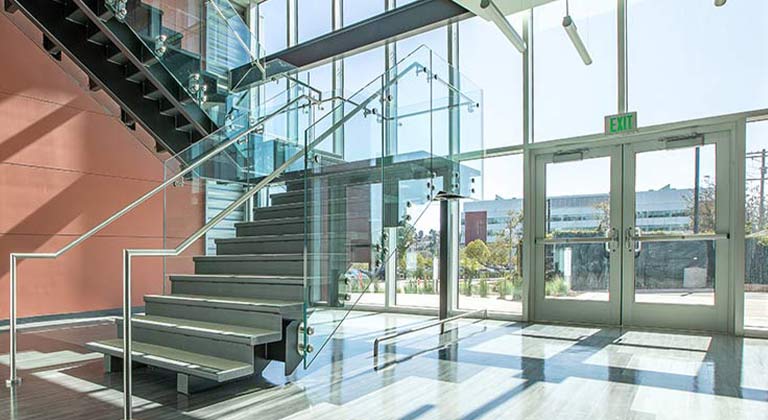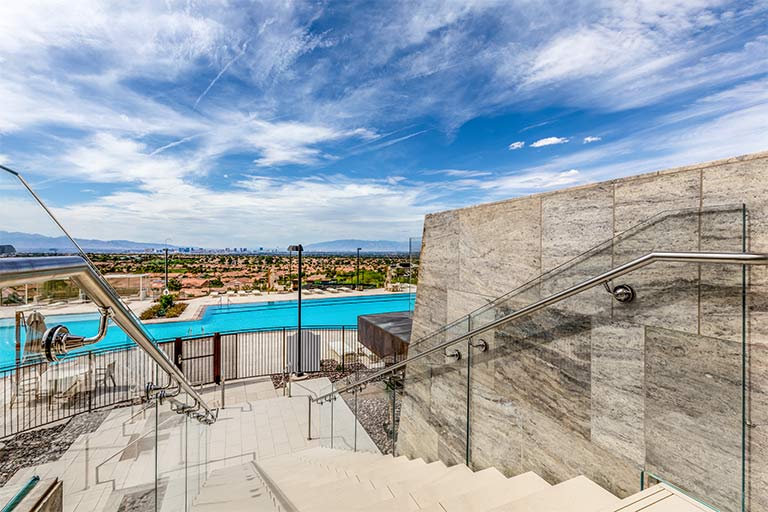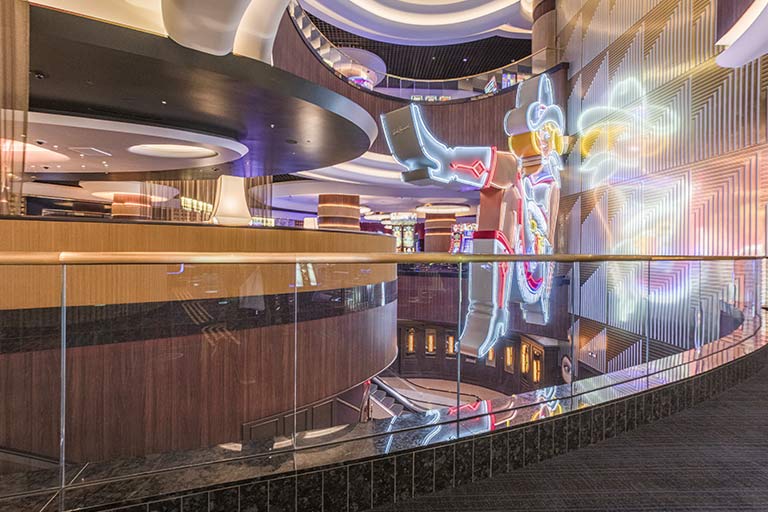
Glass handrail and guardrail can be found in nearly every type of construction project – from high school stairwells to sophisticated rooftop lounges, luxury homes to hospitals. Just as diverse as their sites of installation, glass handrail and guardrail systems can be installed in a wide range of sizes, designs, and materials to best suit the function they provide. In this article, we detail the various elements architects, designers, and glaziers take into account when selecting the right handrail and guardrail systems for the job.
Understanding the Terms
In the industry, the terms handrail and guardrail are often paired together, but they actually refer to two separate types of installations. “Handrail” describes the support installed in staircases, ramps, and walkways, while “guardrail” is built as a structural barrier on balconies, terraces, bridges, and other open edges where individuals could fall and injure themselves. While support and safety are their primary functions, both handrail and guardrail are often designed to add aesthetic value to a space.

The Components
What we call “glass handrail/guardrail” is actually comprised of several components:
Frame
The frame provides the structural shape and support for the system. Frames can be made from a number of materials, but the most commonly used options are wood, aluminum, and stainless steel.
Infill
The infill is the material that fills in the space between the frames. In the case of glass handrail and guardrail, glass serves as the infill of the system. In other kinds of systems, infill can consist of any number of materials, including metal sheets, wood or plaster columns or posts, or steel cables. Because it’s the part of the system that has the most surface area, infill generally plays the largest role in determining the installation’s aesthetic impact. And although it provides some degree of structural integrity, infill is largely a decorative application.
There are many options for glass infill. Tempered glass is among the more expensive choices, due to its clarity and strength. It’s so strong, in fact, that it is actually provides true structural support. Various types of laminated glass, etched glass, and composite glass are also frequently used as infill.
Handrail
Not to be confused with handrail systems, the “handrail” portion of a handrail or guardrail is the part designed to be gripped. The handrail can be attached to the infill, or placed at the top portion of the frame at a graspable height. Handrail components usually fit into one of two design categories — flat handrail and round handrail — and often match the material of the frame, whether aluminum, steel, wood, or something else. Handrail designs contribute to the overall look of the system, and are sometimes installed in innovative ways to maximize their decorative impact.
Because handrail and guardrail are used primarily for support and safety, there are a number of established criteria their installations must meet.

The Considerations
Because handrail and guardrail are used primarily for support and safety, there are a number of established criteria their installations must meet.
Handrail Requirements
Handrail must meet a number of ADA (Americans with Disabilities Act) requirements, including the following:
-
- it must be installed on stairs with two or more risers,
- and on ramps with a rise of 6’ or more.
For commercial and public buildings:
-
- handrail must be installed on both sides of the stairwell or ramp,
- and the handrail portion must also have a smooth, graspable surface between 1.25 to 2 inches in diameter.
Guardrail Requirements
While local code requirements may vary, generally, guardrail is required in any area where there is at least a 30” drop to the floor or ground. For residential usage, guardrail should be at least 36” tall. In commercial applications, guardrail must be at least 42” tall.
Load Requirements
Handrails and guardrails are required to support a uniform load of 50 lbs/ft or a concentrated load of 200 lbs. from the top of the handrail or guardrail. The infill portion must be able to withstand a load of 50 lbs/sq.ft. Engineering data/test reports are often required to confirm the load requirements of the system.
As a glazing company that works on commercial, municipal, and residential projects, Giroux Glass is no stranger to the terms, components, applications, and requirements for glass handrail and guardrail. If you’re seeking professionals to consult on and install these systems for your project, our team of expert glaziers is ready to help. Contact us at any time; we’d be thrilled to apply our more than 75 years of industry knowledge and experience to support your needs.